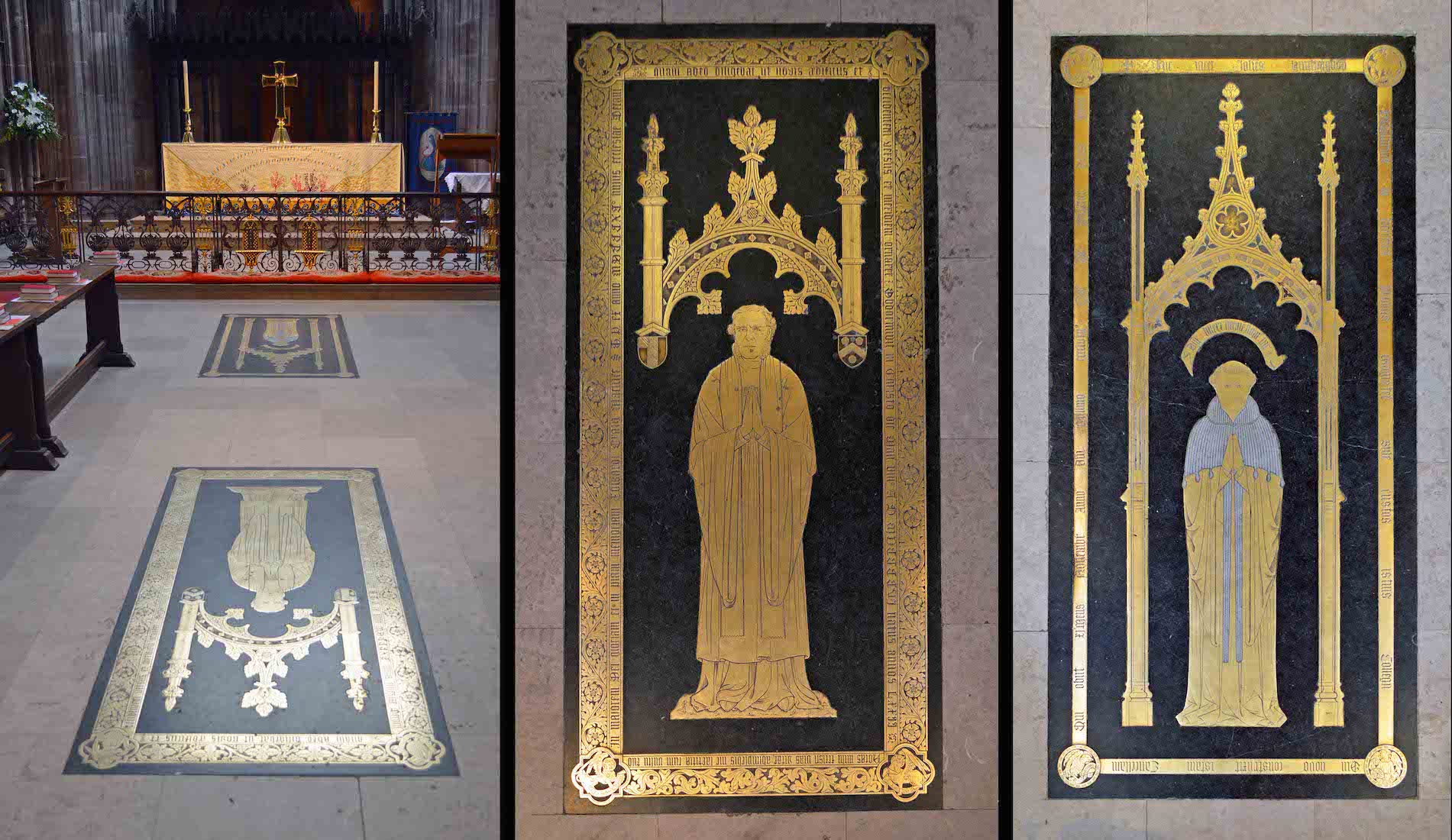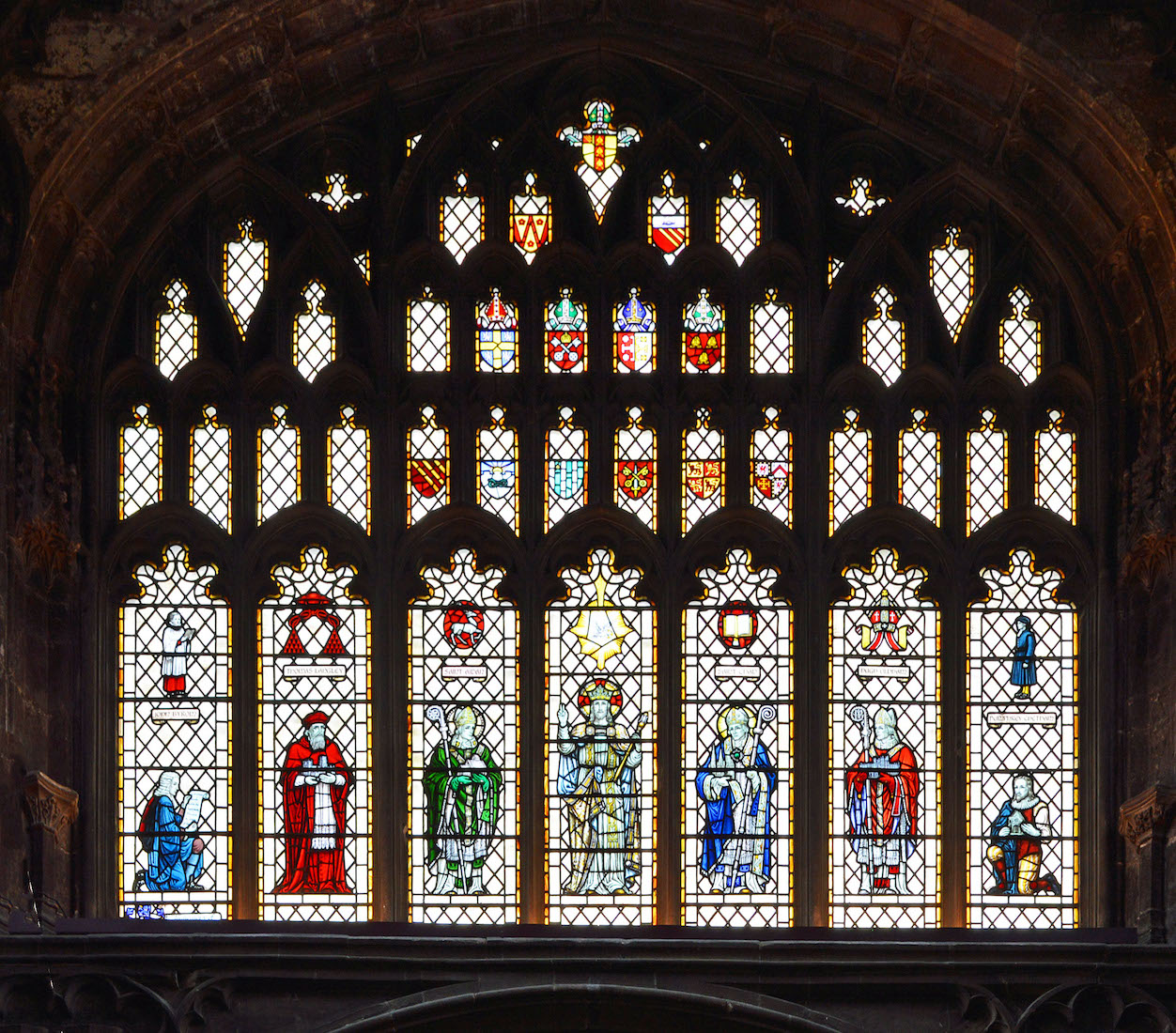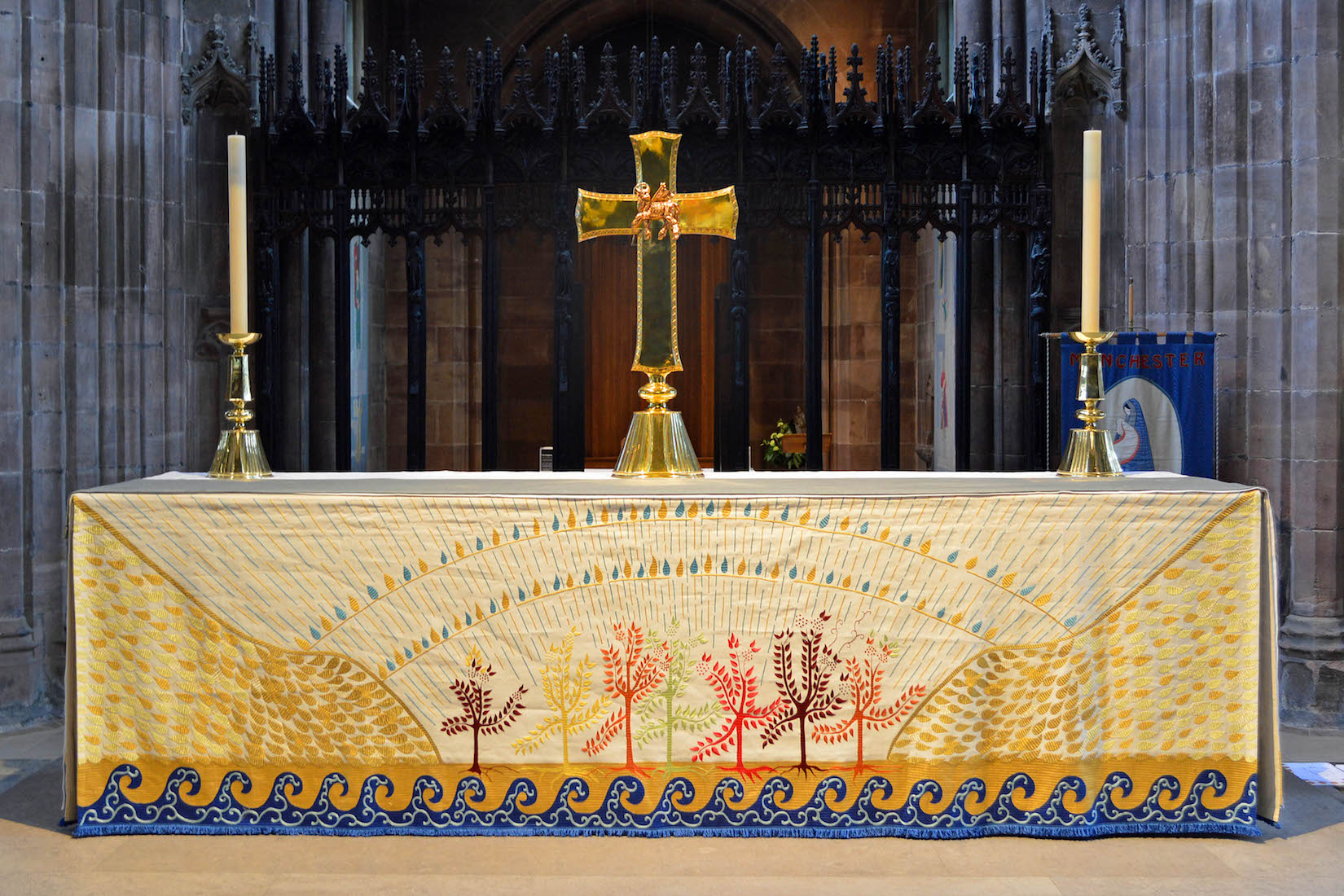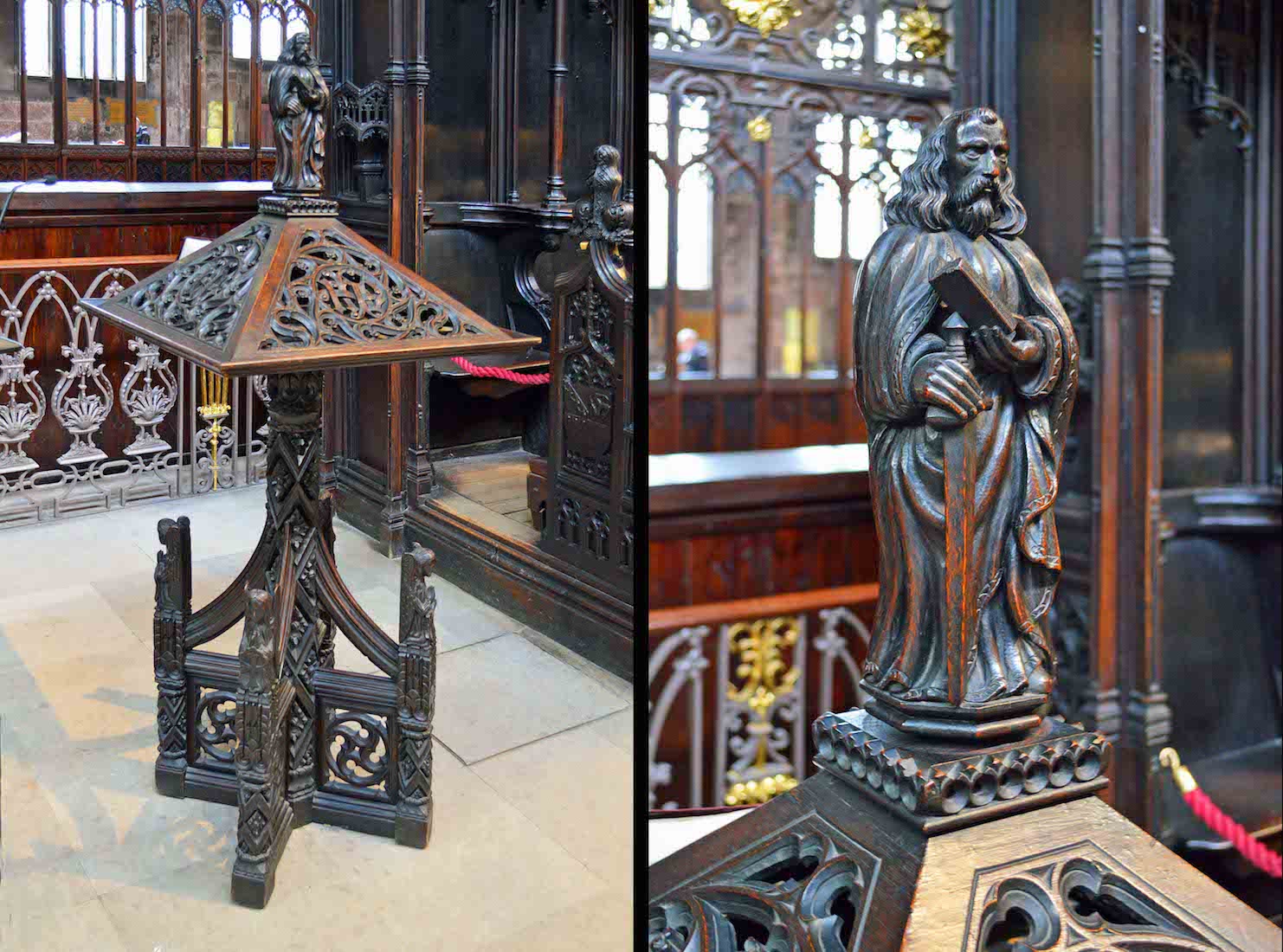
Approaching the altar, we come to this unusual lectern on our right. This would be useful for four part readings! I understand that the only other one like it is in ‘St Chad’s’ – but I am unsure where. The figure on top is St James. PLAN
62. CATHEDRA
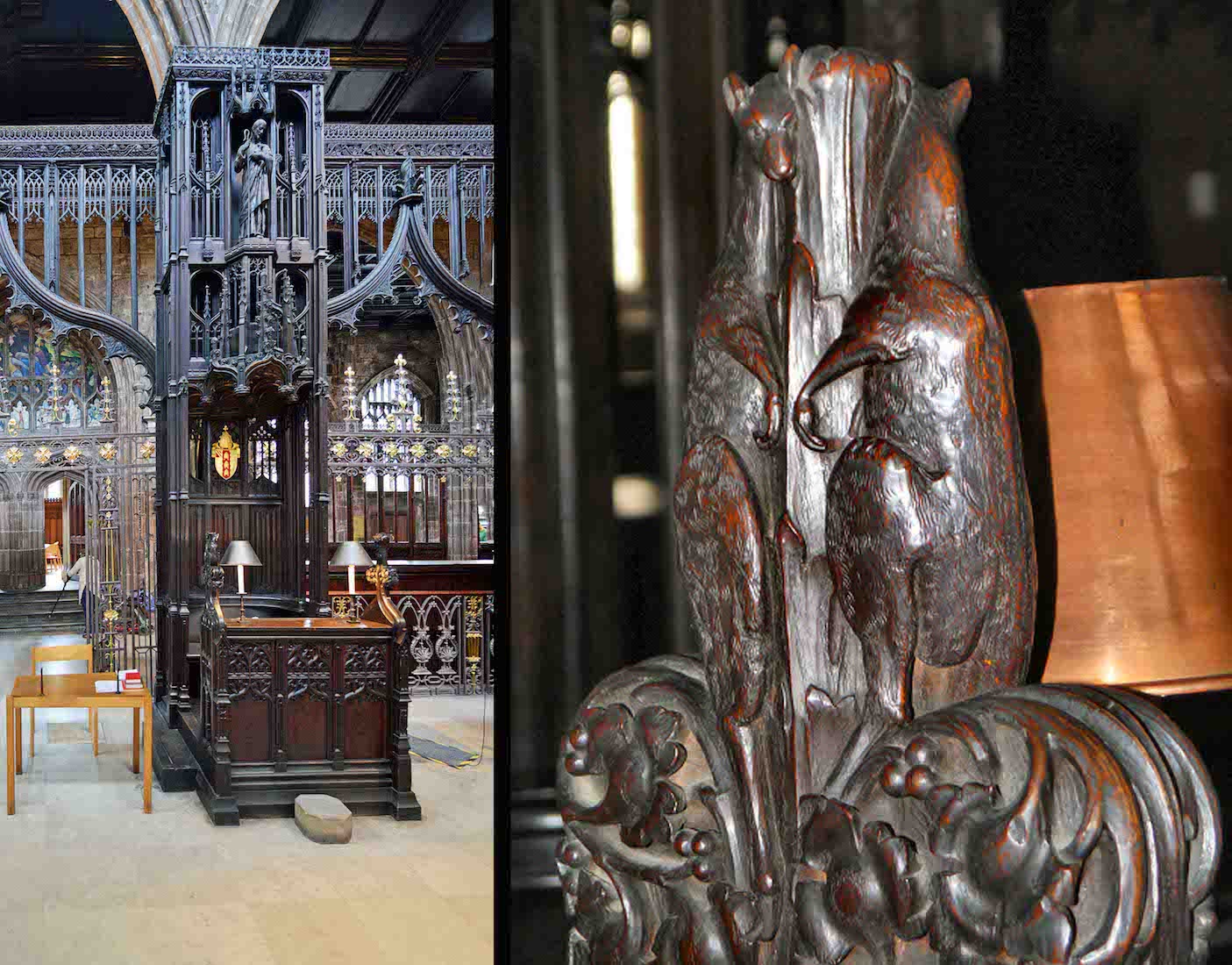
Just beyond the lectern is the cathedra, or bishop’s chair. The presence of this chair indicates the attachment of the bishop to this particular church, and its presence gives this church the name ‘Cathedral’. There are in fact two kangaroos carved into the left front post: James Moorhouse, the third bishop of Manchester (1886-1903) was formerly Bishop of Melbourne. [Right Photo Credit: David Dixon – geograph.org.uk/p/3385124]
63. MEMORIAL FLOOR SLABS
As we approach the high altar we notice two memorial slabs in the floor. The brass at left remembers the Very Rev Edward Craig Maclure (1833–1906), DD, MA who was a distinguished Dean of Manchester. The brass at right remembers John Huntington who oversaw the rebuilding of the Cathedral. This took eighty years and Huntington would never see it completed, dying in 1458, harassed by a grievous sickness.
64. EAST WINDOW
Above the high altar is this post war replacement East Window, by Gerald Smith. The design shows figures of local significance. From left to right it features John Byrom (Manchester poet), Thomas Langley (a bishop of Durham, Lord Chancellor and cardinal but who was born locally), St Aidan, Christ in Glory, St Chad, Hugh Oldham (founder of Manchester Grammar School) and Humphrey Chetham (founder of Chetham's Hospital and library, now combined as Chetham's School of Music).
65. HIGH ALTAR
We conclude our visit to Manchester Cathedral at the high altar. This is the table where Christians celebrate the Lord’s Supper, remembering the sacrifice of Christ on the Cross.
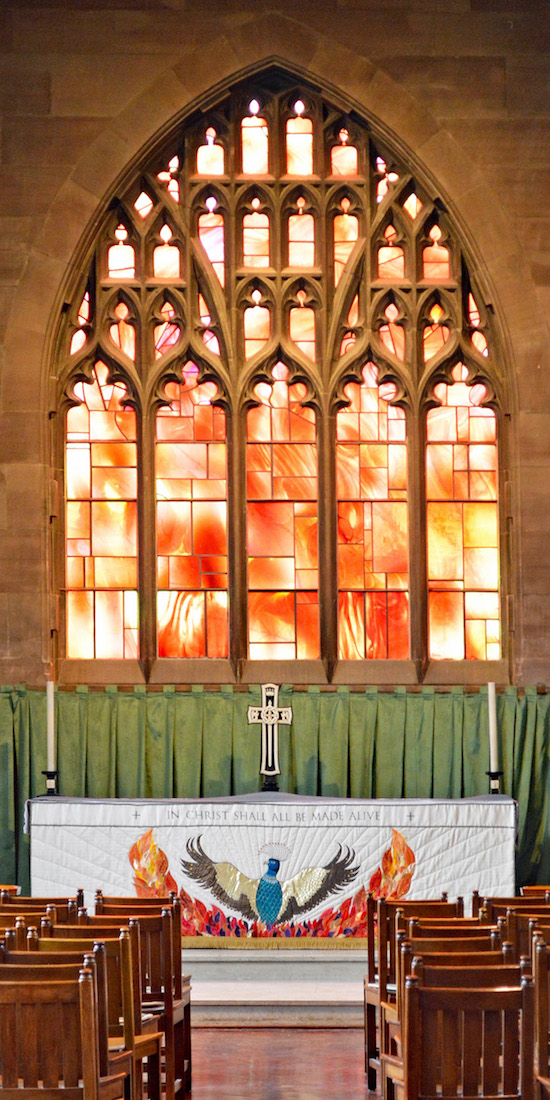
CONCLUSION
I hope you have enjoyed visiting Manchester Cathedral with me. I enjoyed this Cathedral which has experienced more than its fair share of trauma. At the time of my visit the Cathedral tower was covered with scaffolding and black plastic. This type of problem is often experienced by photographers of cathedrals – an obstacle to be worked around!
I am happy to receive constructive comments or corrections concerning this website. The best websites are the ones which have no errors! I am grateful to my wife Margie who has proof-read these pages.
Almost all the photographs on this site are mine but I take little credit for the text. As usual I have found Wikipedia to be very helpful, and also the Manchester Cathedral Visitor Guide. I happily acknowledge these sources.
The Cathedral does have its own website with link
http://www.manchestercathedral.org/
My photographs which appear on this site can also be found in higher resolution at:
https://www.flickr.com/photos/paulscottinfo/sets/
Paul Scott Site created 08 / 2018 reformatted 04 /2020

